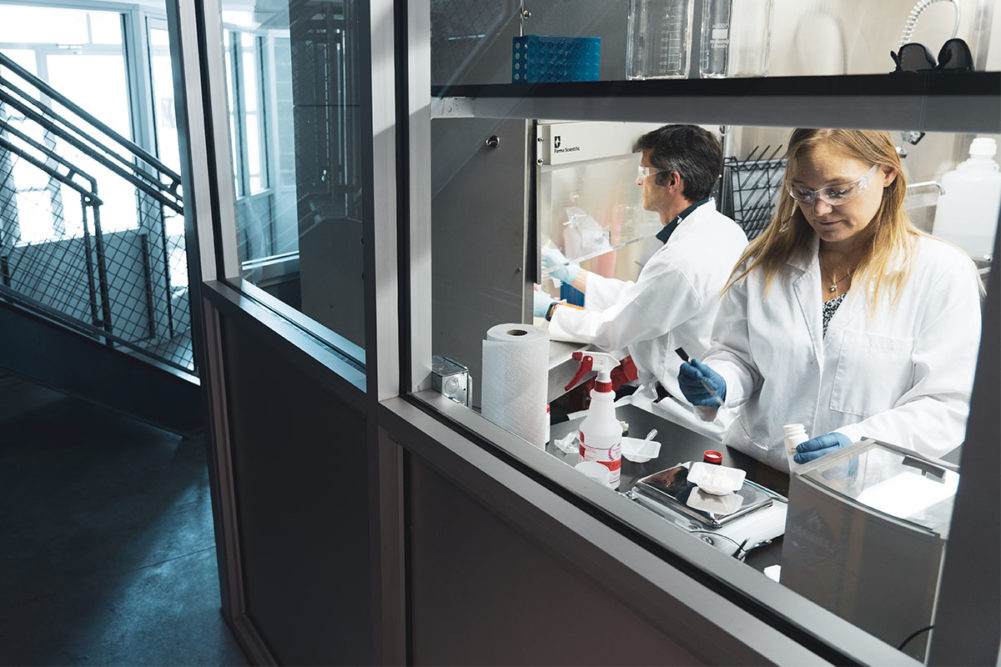BOULDER, COLO. — In late 2022, ADM shared its third-annual outlook of consumer trends likely to shape the food and beverage and animal nutrition industries in years to come. Among this list were shifts in protein sourcing sentiments, traceability, sustainability, social impact and modern pet ownership. At the cross section of these consumer trends is an accelerating urge to find new, innovative ways to feed the world’s growing population of people and pets in a more sustainable and responsible manner.
Bond Pet Foods is answering this call with aplomb as it seeks to transform the way pet food proteins are perceived, one cell at a time.
Bond first emerged on the pet food scene in early 2019 as one of five startup finalists selected for Purina’s third-annual Pet Care Innovation Prize. Since its inception, the company has garnered support from prominent investors, partnered with key industry players, and significantly scaled its capabilities as it seeks to reimagine the possibilities for pet food proteins.
Current investors in Bond include ADM and Wilbur-Ellis, both of which have recognized the potential precision fermentation offers as the pet nutrition industry prioritizes sustainability with increasing fervor. The company has also partnered with Hill’s Pet Nutrition to develop a fermented protein ingredient for use in select product formulations.
In September 2022, Bond announced the closing of its $17.5 million series A funding round, which included investors ADM Ventures, Cavallo Ventures by Wilbur-Ellis, Thia Ventures, iSelect Fund, Stage 1 Fund, Lifely VC, Satori Capital and Joan Jett. Part of this funding was dedicated to the construction of a new 15,000-square-foot facility to accelerate production. The company also shared it would more than triple personnel to strengthen its technical, scientific and regulatory teams.

Rich Kelleman, founder and chief executive officer of Bond Pet Foods.
| Source: Bond Pet FoodsTo understand where the idea for Bond came from, how it’s evolved over the last several years, and where it plans to go next, Pet Food Processing spoke with Rich Kelleman, founder and chief executive officer of Bond Pet Foods, who was one of a handful of people who planted the first seed for the company back in the mid-2010s.
Planting the seed
Despite not being a food scientist by trade, Kelleman said the concept behind Bond was his “hare-brained idea” from the beginning, a sentiment that has been proven utterly wrong given the company’s fast growth, strong support and forthcoming market breakthrough. Surprisingly enough, his background in advertising led him to the core question that eventually evolved into Bond as it exists today.
“I spent the last 25 years working on some of the biggest brands in the world, everything from Proctor & Gamble to Kellogg's to Facebook to Chevrolet and, ironically, about 13 years ago, an account at an ad agency that brought me out to Boulder, Colo., was the Burger King account,” he explained. “At that time, BK was trying to better understand how they could compete with the likes of Chipotle and Panera Bread, who were redefining what quality meant in fast food at that time… That whole discourse and dialogue opened my eyes to the challenges that are attached to conventional agriculture, especially the procurement of meat.”
After learning more about the animal agriculture system through that role, Kelleman decided to go vegan, “which led to some interesting client conversations,” he said. Years later, when he added a dog to his family, he began exploring how he could feed his four-legged companions in a way that was more responsible to animal welfare and the environment.
“Not that we had any designs on making our pets vegan, because meat can be a beautiful thing for their health, but I just started to ask the question — could there be a better way to give them nutrition they need without all the farm animal welfare, environmental and safety downsides?” he said. “And that's essentially where the seeds of Bond were planted.”
This led to his exploration of various alternative protein technologies, and a key epiphany emerged along this train of thought. Companies producing alternative proteins for human consumption must check several boxes to gain consumer approval, including appearance, sizzle, mouthfeel and taste. On the other hand, while we eat with our eyes, pets eat with their noses; therefore, these attributes boil down to palatability and nutrient bioavailability. From Kelleman’s perspective, this means the path to commercialization for alternative pet food proteins would be relatively easier than for those in the human food space.
“For dogs and cats, you don’t have to fully recapitulate that meat-eating experience,” Kelleman said. “It has to taste good, but it doesn’t have to taste like chicken. It just has to provide them with something they’re willing to lap up, and give them the essential amino acids and foundational nutrition they need to thrive.”
After years of rallying like-minded people in the right industries to fuel this vision, Kelleman and his team ultimately landed on precision fermentation as the chassis through which it would aim to redefine protein for the pet food industry.
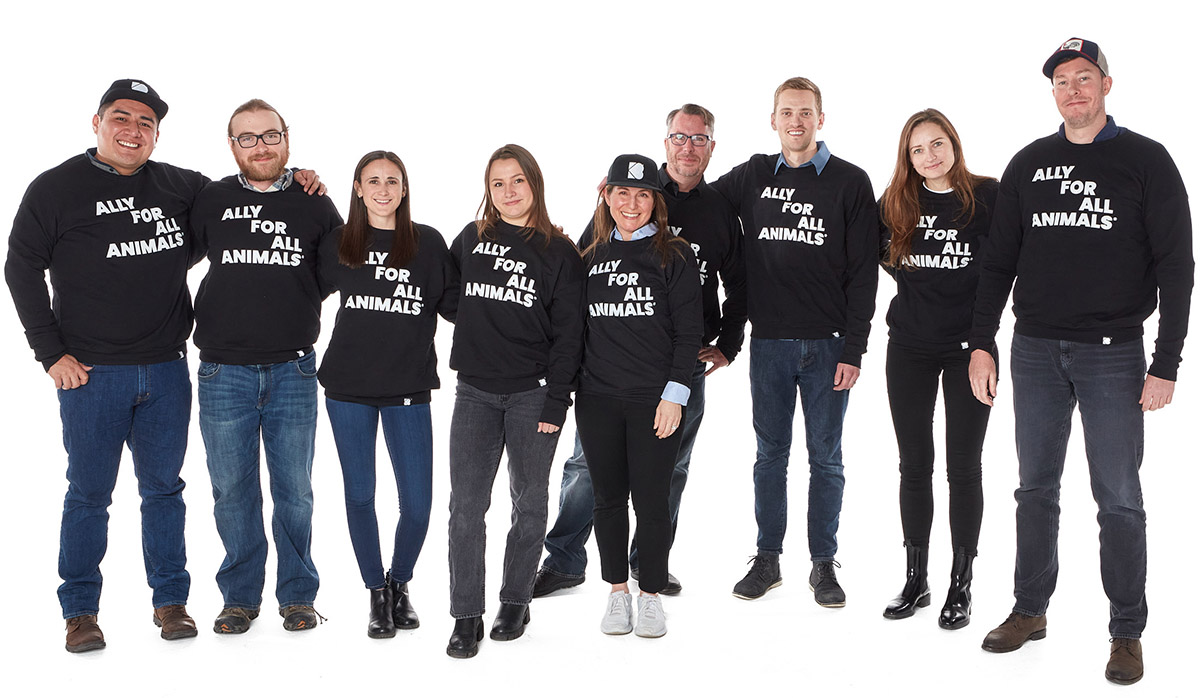
Aside from its tenured team members — including Kelleman, Chief Scientific Officer Pernilla Audibert, Senior Research Scientist Luis Brandao, and Chief Technology Officer Tony Day — Bond Pet Foods added several new members to its team as it prepares for growth. From left: Uriel Hernandez, bioprocess engineer; Mason Vess, fermentation engineer; Samantha Kent, research associate; Sarah Collins, process development engineer; Cindy Bryant, chief business officer; Patrick Westfall, vice president of research & development; Joel Bozekowski, senior scientist I; Monika Berankyte, chief of staff; and Karl Gerhardt, senior scientist I.
| Source: Bond Pet Foods“Bond, as a company, is not anti-meat,” Kelleman explained. “We're not suggesting that meat shouldn’t play a role in the industry, or in providing our dogs and cats with what they need. Our belief is just that how it’s made can be done much better. That’s why we’re taking this different approach to create these inputs into pet food recipes and formulas. It's not that we think meat doesn't have a role — we do wholeheartedly. We just believe that it can be procured with a greater level of integrity and responsibility built in.”
Old dog, new tricks
Precision fermentation has been used for millennia to produce a variety of foods and health products, from cheese to pharmaceuticals to vitamins. In other words, Bond Pet Foods is taking an old dog and teaching it new tricks.
“It’s a process that’s been used for decades to make an enzyme that today is used in 90% of all cheese manufacturing — even organic cheese in part,” Kelleman said. “We’re standing on the shoulders of processes like that to create bioidentical meat proteins that have everything dogs and cats need from a protein standpoint to live a long and healthy life.”
In short, the process involves pairing a microbial host — in Bond’s case, Saccharomyces, a strain of yeast that has been used in the pet food industry as a palatant and supplemental source of protein, minerals, B vitamins and other nutrients, according to Kelleman — with a harmless sample of a chicken’s DNA (the building blocks of any plant or animal and the foods they produce), then placing them into a bioreactor to control the temperature, pH and other environmental factors. Inside the tank, the Saccharomyces chicken starter is fed natural sugars, salts, vitamins and minerals, and other natural inputs to encourage it to produce a desired ingredient — in this case, chicken muscle meat protein.
This process creates a protein derived from chicken and yeast that is biologically identical to protein that would be harvested from a once-live chicken.
“It’s fundamentally different than a plant-based solution, which is an effort to mimic things using plant-based ingredients,” Kelleman added.
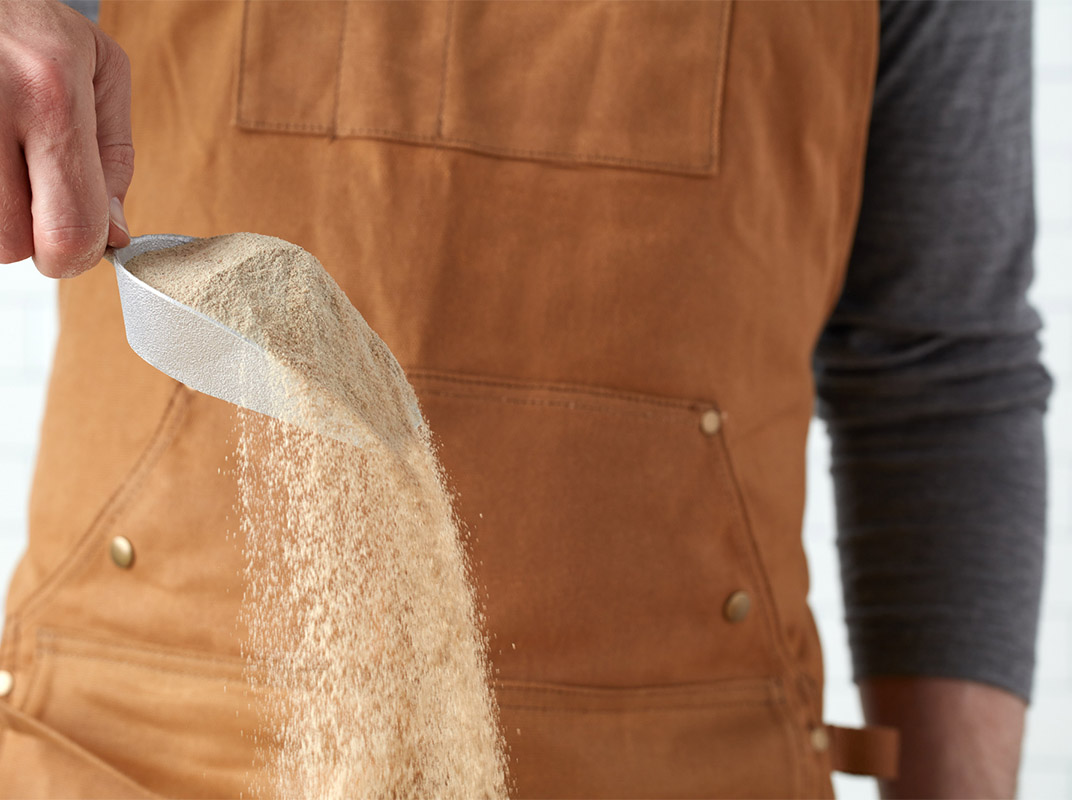
Bond creates bioidentical chicken protein using Saccharomyces yeast and a DNA sample taken from a chicken without causing harm to the animal.
| Source: Bond Pet FoodsCreating nature-identical proteins from microbes through precision fermentation may seem like science fiction, but the reality Bond is proving is that this age-old process can be used to produce safe, nutritionally viable proteins for pets in a way that is sustainable from both an environmental and animal welfare standpoint.
Brewing benefits
Bond is currently in the process of comparing the environmental impact of its approach to that of conventional meat meals, chicken breast and other animal byproducts used in the pet food industry through an initial life cycle analysis (LCA). While the jury is still out on exact numbers from the LCA, Kelleman said he expects Bond’s approach to yield “exponential savings” in carbon intensity, greenhouse gas emissions, and land and water use compared to conventional protein options on the market today.
“All these different metrics are in part due to the fact that we are producing on such a small footprint,” he said. “The real estate, the kinds of simple inputs that are used in the manufacturing and production process, the simplicity of logistics of harvesting — which involves drying it down and grinding it into a powder — we can do that and all one central location that won’t require multiple partners, vendors, or kinds of equipment to get to that finished specification.”
When it comes to animal welfare, Kelleman described Bond’s precision fermentation approach as “the highest standard.”
“There are no animals that are harmed in the production of this meat protein, which is crazy to think about,” he revealed. “How can you make meat without harming an animal? Through what we're employing with this technology, that’s our reality.”
Aside from its environmental and animal welfare accolades, precision fermentation also offers opportunities for supply chain stability, food safety and transparency.
Bond’s fermented ingredients are a blend of chicken and yeast proteins — period. Because this blend is ultimately the final specification of the end protein, the process eliminates the risk for foreign materials, pathogens, and other harmful contaminants inherent to conventional meat processing environments. This is also true for animal-borne illnesses such as highly pathogenic avian influenza (HPAI), which has interrupted poultry supply chains across North America.
“The purity of the ingredient and being able to show with high confidence what it is and its traceability is a huge advantage of this way to produce these proteins over those that are harvested through conventional agriculture,” Kelleman said.
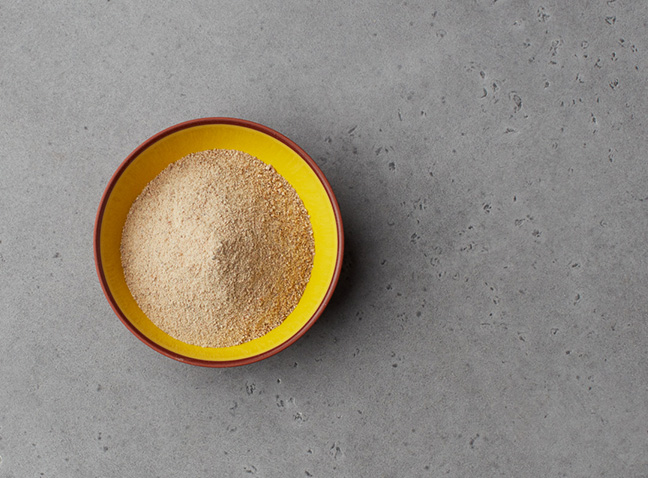
The nature of precision fermentation lends itself to food safety, transparency, animal welfare and sustainability — all of which are top of mind for today’s pet parents.
| Source: Bond Pet Food“We can also avoid any kind of intrusion from some of those viral or environmental things that kind of seep their way into the ebb and flow of the procurement process, which allows us to provide more stability, security, and efficiency when it comes to the production and availability of these ingredients,” he added.
The path to commercialization
While the company was founded on a B2C model involving key B2B partners, Bond has since shifted to a strictly B2B strategy.
“When we look at the overall impact that we could have as a company, looking at the value of each dollar investment that we could make at this stage in our development, pound-for-pound, we made the choice last April to shed the B2C part of our business and just focus on being meat makers for industry as a B2B ingredient supplier,” Kelleman shared. “That is — and will be — our sole focus as we press ahead.”
The company currently has two pet food proteins in its pipeline, one of which is a chicken protein Bond first developed in August 2020. The other is a proprietary ingredient created in partnership with Hill’s Pet Nutrition.
“Both of these proteins will be going through the full review — regulatory processes, longitudinal feeding trials, etc.,” Kelleman said. “For the chicken, we will have data by the end of the year or early next that we’re intending to publish for a peer review and make that information available.”
Kelleman noted that with the right expertise and some strategic thought behind facility proximity to key inputs — namely sugar, as it is the main ingredient needed to feed the yeast — the process can be scaled “virtually anywhere.”
“Once we’re producing it in tonnage, then the unit economics actually become super competitive with conventional chicken protein and other options that are currently in the market today,” Kelleman said. “There's also more consistency in those costs and the unit economics.”
Bond is currently moving from benchtop processes to pilot scale, in which the company will move from producing kilograms of product to tons in the coming years.
“We’re just starting to produce significant amounts of the ingredient in service of longitudinal feeding trials in dogs and cats so that we can demonstrate performance, safety and efficacy, as well as palatability,” he said. “…We're at the cusp of commercialization right now, but there’s still work that needs to be done.”
Consumer education will play an invaluable role in shaping how the industry and pet owners alike view alternative proteins, such as those made through precision fermentation. This will involve teaching producers and pet parents about the history behind precision fermentation, its environmental, animal welfare and nutritional merits, what the protein looks like and how it’s made. In turn, Bond plans to use the feedback it receives to craft its rollout strategy.
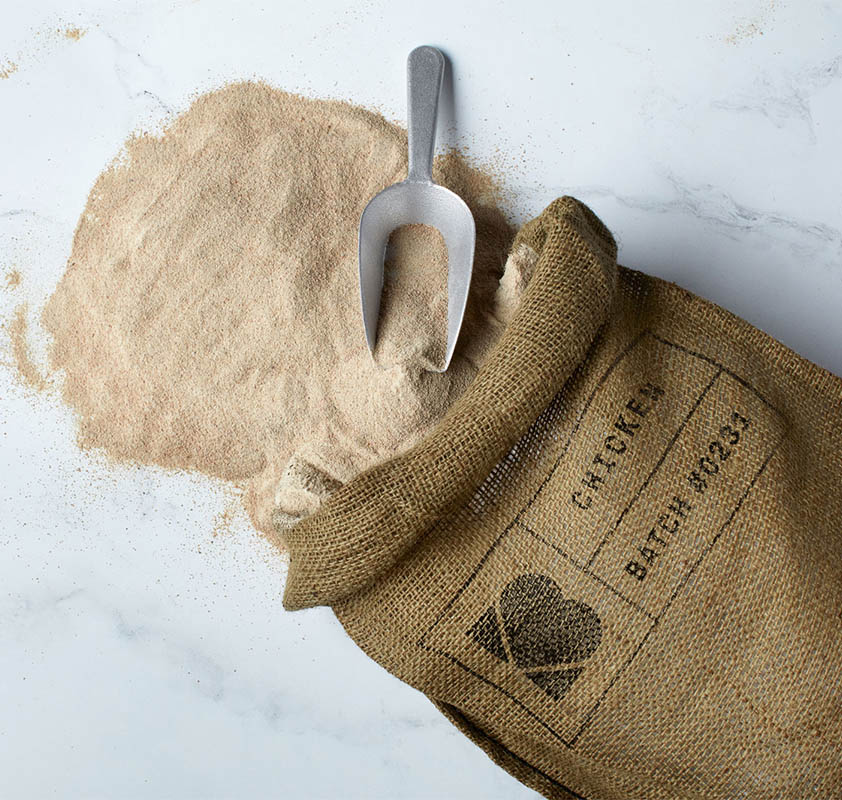
As Bond Pet Foods nears commercialization, the company will lean heavily on consumer education, research and feedback to position its proteins for success.
| Source: Bond Pet Foods“We’ll have a better chance of success once people understand the mechanics of how this works and we establish some familiarity with things that they’re already eating on a daily basis,” Kelleman said.
A future for fermentation
According to CRB’s 2023 “Horizons: Alternative Proteins” report, companies that create fermentation-derived proteins have a leg up in the alternative protein category. CRB stated in the report that protein producers focused on fermentation are in “a more commercially advanced position” compared to other alternative protein segments.
However, operational barriers do exist as scale grows. Of the fermentation-derived protein producers that participated in CRB’s survey, 74% noted purity would be a barrier if production were doubled, while 68% noted yield as a barrier, 62% noted selectivity — or the minimization of byproducts and side products — and 56% noted productivity as a barrier.
But for companies that pace their growth, invest intelligently, and remain attentive to feedback from the market and from consumers, the future of fermentation-derived proteins is bright. Kelleman is one such optimist.
“There’s a long history looking back on the use of precision fermentation and, moving forward, there’s a new creative renaissance happening right now,” he said. “How can we employ some of these same principles to create things that could have value for people and for pets? Quite a bit of capital is going to these new ventures and these new ideas, so I’d imagine if we look forward to another decade with all this creativity and ingenuity, we're going to see a food system that has more efficiency and responsibility built in.
“We’ll see a more diverse array of food ingredients in the supply chain that might unlock different flavors — not just trying to mimic ingredients that are tried and true and that we love, but new ways of experiencing food,” Kelleman added. “It also could unlock better nutrition over time, which is really what we’re aiming for with our work at Bond. We can control that fermentation process and, with this craft of meat making over time, optimize the kinds of things that could be most valuable to a dog or cat. Long story short, with all the exciting things that are in play, I’d imagine that in another decade or two the food system will look quite different, and that's probably for the better.”
Read more about product development, ingredients and formulation.

